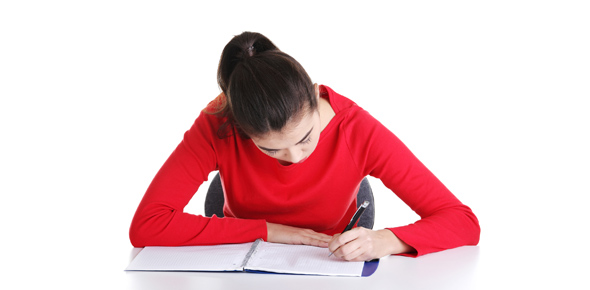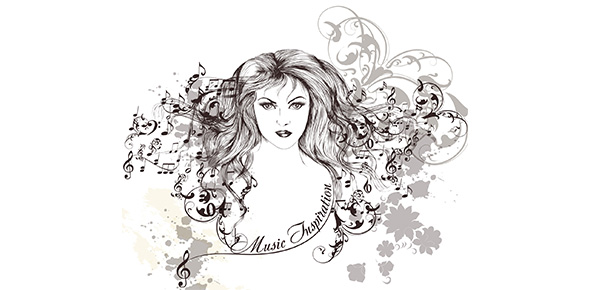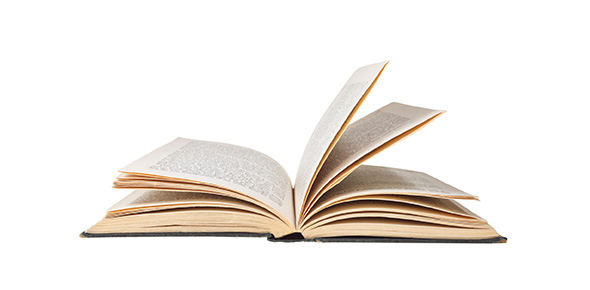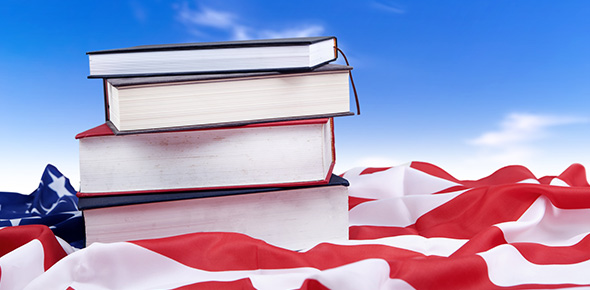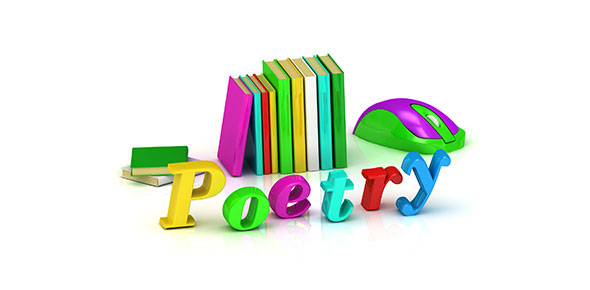Related Flashcards
Related Topics
Cards In This Set
| Front | Back |
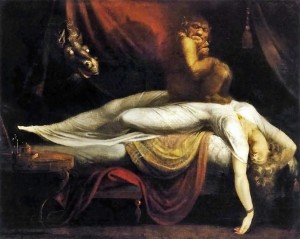 What is this image? |
John Henry Fuseli.
The Nightmare. 1781. // Fuseli was interested in portraying unconventional heroes who follow presonal passion and exemplify individual freedom, especially in the face of societal pressure to conform and repress desires; the incubus on the woman's stomach has been viewed as representing either her own psychotic monster or Fuseli's own repressed desires; filled with sublime terror, explores erotic ddepths of the human mind and shrugs off expectations of what painting is supposed to be about |
 What is this image? |
Francisco Goya.
The Sleep of Reason Produces Monsters. 1799. // get some sense of his reaction to the period's crises from the artist asleep on the geometric block of reason, while an ominous display of owls and bats (symbols of ignorance and folly) are behind him; easy to see it as exposing a second, non-Enlightenment side to Goya's personality, the emotional and illogical rather than the rational, sense that the owls and bats are released from the inner mind of Goya, becomes an expression of his own emotional state of despair at the terrible events transforming the Western world |
 What is this image? |
Francisco Goya.
The Third of May, 1808. 1814. // in response to the French occupation in Spain; painted after Napolean had been deposed and Ferdinand reinstated, shows the mass execution of Spanish rebels that took place on this date; he presents anonymous nobodies caught up in the powerful forces of history; one rebel dressed in white has the pose of Christ on the cross, suggests martydom, but Goya denies this; Goya says they are consumed by the fear of death not the ecstacy of sacrifice; Goya rejects tight Neoclassicism paint handling, linearity, and lighting and replaces these aesthetics with loose brushwork, intense colour, and compositional turmoil on left with dramatically receding line of soldiers on right |
 What is this image? |
John Constable.
The Haywain (Landscape: Noon). 1821. // packed with emotion that welled within the artist when experiencing the beauty of the Stour Valley; both scientific and subjective; fills painting with detailed anecdotes, this is no perfect world but a particular site presented in all of its specificity, as seen by the field workers, dog, stream, etc.; Romantic era had a national pride and artists passionately painted their own countries; this was a period of social and economic unrest that put financial pressure on their land but Constable chose instead to focus on a personal attachment to the land and the life he knew as a child |
 What is this image? |
Joseph Mallord William Turner.
The Slave Ship. 1840. // shows the sick and dying humans being thrown into the sea during a typhoon, was influenced by a newspaper article about a ship's captain who had thrown slaves overboard to collect insurance; gives a close up of human suffering, in the background is a slave ship heading for the fury of the typhoon and its own struggle for survival; makes the viewer feel for the inhumanity of the moment, picture is as much about the struggle of daily life and the role of fate as it is about the immorality of the slavers |
 What is this image? |
Jean-Auguste-Dominique Ingres.
Portrait of Madame Ines Moitessier. 1856. // was comissioned, painted a wife of a wealthy banker as an image of Classical perfection; beauty is accentuated as much by the background as by her clothing; pose suggests various classical prototypes while her hand-to-head gesture derives from Roman murals at Herculaneum; mirror reinforces the introspection of the gesture and tinting the painting with a mysterious mood that converts the realistic materiality of the physical surroundings into a spiritual embodiment of beauty; romantic overtones are in the mysterious moof and intensly lush setting even though it is a neoclassical painting |
 What is this image? |
Theodore Gericault.
The Raft of Medusa. 1818-1819. // paint a moment when the survivors first sighted a ship; painting about the harrowing mental and physical experience of survival rather than an accusation of injustice; move from death to hope as the eye moves from dead bodies to those signaling the ship; theme is the human species against nature and his goal was to make a viewer feel the trials and tribulations of the castaways; the stark realism (obtained through tighter brushwork) heightens our visceral connection to the dramatically lit event |
 What is this image? |
Eugene Delacroix.
Death of Sardanapalus. 1827. // based on the tale of Sardanapalus, the last king of Assyria, from the historical library of Diodorus Siculus, the ancient Greek historian, and is a work of the era of Romanticism. This painting uses rich, vivid and warm colors, and broad brushstrokes; /// the last Assyrian king was overthrown by rebels because of his lack of moral restraint and apathy, he committed suicide, this shows the scene of his death; had undulating contours, riotous colour and compositional pandemonium to project the disparate modds of destruction, fear, violence, power etc.; Sardanapalus (Detail) had ordered his possessions destroyed and sex slaves murdered before immolating himself, once he learned that he was faced with military defeat |
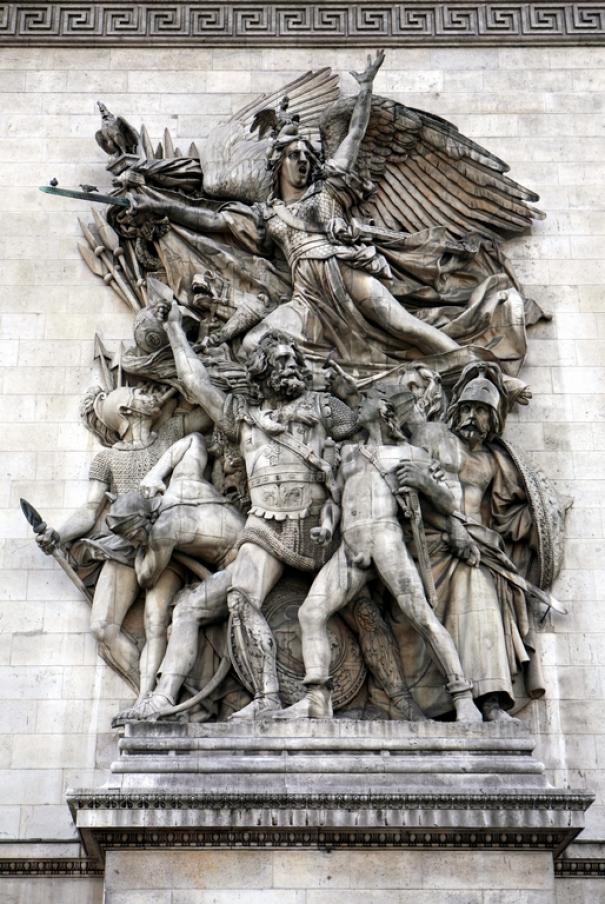 What is this image? |
Francois Rude.
The Departure of the Volunteers of 1792. 1833-1836. // scene that honours the volunteers who rallied to defend the new French Republic, allegorical figure representing both France and Liberty leads a collection of soldiers from different period of the nations past; rather than a specific event, he evokes an eternal, all powerful nationalistic spirit that emanates from the people and arises when called upon; have classical anatomy and strike classical poses but the composition is frenitic, and this claustrophobic jumble is not classical but more romantic |
 What is this image? |
Sir Charles Barry and A.W. N. Welby Pugin.
Houses of Parliament. London, England. 1836. // gothic-revival building that was commissioned after the former building burned down, and the competition required the new Houses to be designed in one of two "English" styles either Gothic or Elizabethan; Pugin was Britain's leading expert on gothic; gothic details barry was the head architect who was best known for classical revival styles and laid out the symmetrical plan for the building; gothic revival is now largely pituresque and associational with a style to conjure up a sense of national pride |
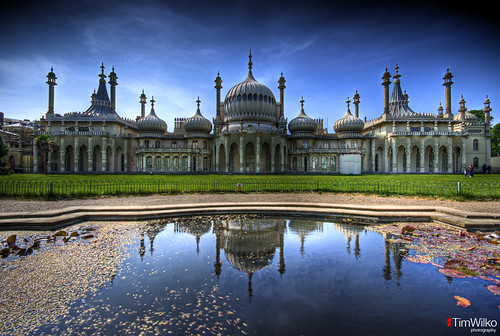 What is this image? |
John Nash.
Royal Pavilion, Brighton, England. 1815-1823 // turned to the fashionable oriental mode for the palace; had already been partially erected in the Palladian style when he took over so he was handicapped from the start; put on iron armatures over the Palladian facade to support the cast-iron onion domes and minarets; quoting Asian architecture from the inside and out (Indian, Gothic, Chinese, etc.) to create a rich fantasy world that played on the Romantic desire to be transported to exotic places and into the distant past |
 What is this image? |
////MOVING INTO REALISM
Gustave Courbet. The Stone Breakers. 1849. // presents pn a confrontational, lifesize scale two workers pounding stones to make gravel for a road; portrayed with veracity, their poverty and social class known from their ragged clothing, coarsness of their labour, and by the dirt on their skin; fact that their faces cannot be seen virtually makes them inanimate objects themselves; broad application of paint that reinforces the powerful physicality of the figures; figures are in a shallow space where they have been pushed to the surface of the canvas; about social injustice and a product of the revolution; rather than presenting rural life as comic or pastoral, he depicts the harsh reality |
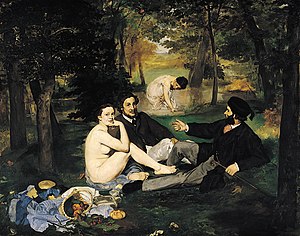 What is this image? |
Edouard Manet.
The Luncheon on the Grass. 1863. // created a scandal by presenting a contemporary sense of a naked womann in a park with two nattily dressed men; public outraged because they thought she was a prostitute; was inspired from renaissance paintings and from the poses of the river gods in previous paintings; was a condemnation of bourgeois values and academic taste and a statement about what art should be about (the modern world) // with this painting he began the modernist tradition, one that emphasized abstract qualities of art; his unfinished sketchy look of his paintings denied the academic tradition and was used to create a sense of energy and a view of what the quickly changing modern world looked like |
 What is this image? |
Edouard Manet.
Olympia. 1863. // prositute with rich upper class clientel based on the venus of urbino, is the modern-day version of a godess; with this classical reference, the name also was an attack on the allegorical veilings of erotic nudes that appeared in the Salons; reality of contemporary Paris, many wealthy men kept mistresses and visited prositute; staring out of the painting to make men unfortable and fulfill their worst fears of controlling an independent woman; genre painting reflecting Manets interest in Parisian interaction of the classes and the importance of money and commodities in contemporary life |
 What is this image? |
William Homan Hunt.
The Awakening Conscience. 1853-1854. // inspired by a passage in which a woman is sitting on her lovers lap singing, when she suddenly becomes aware of the lyrics and then abhors her sinful situation from which she must immediately escape from; realist literature of the period preceived prostitution as a womans only hope of improvement even though it would lead to ruin; every object seems to function symbolically, the cat chasing the bird reflects the kept womans position, the clock approaching high noon represents that the time left for decisive action is quickly expiring; background open window represents redemption |



